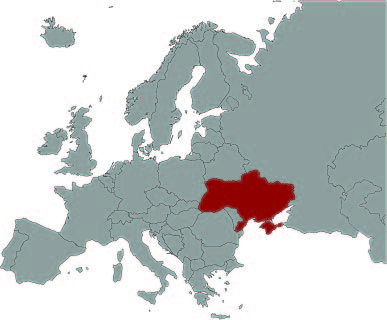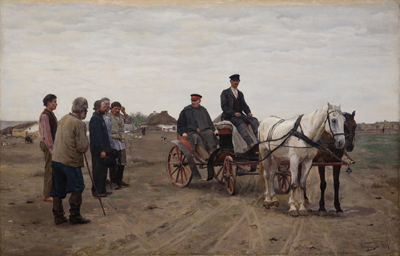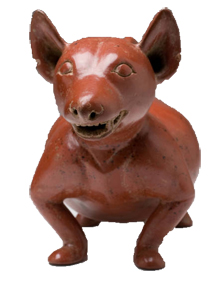

Recall Charles Dickens's story A Christmas Carol. Ebenezer Scrooge is a wealthy man visited by three ghosts who show him his greedy flaws. He is slow to heed the ghosts' advice, but Tiny Tim, the crippled son of Scrooge's poor employee Bob Cratchit, changes Scrooge for the better. Characters such as Tiny Tim were what separated the Realists from other realistic forms of art. While the subjects in other art are very realistic, they are also idealized; even if they were modeled after real people, they are often changed to fit an ideal of perfection. Realism in art shows real people and situations that mimick everyday life. Sometimes these depictions are even grittier than real life to contrast with the earlier focus on the opulent upper class world.
Look at the figures in Arbiter of Peace. An officer is settling a conflict between the local people to the left. Russian serfs had been freed in 1861, just 26 years before the painting was made. Russian artists, such as Kuznetsov, included these serfs and the industrial working class in their art. They also began making their art accessible to these groups of people.
Nikolay Kuznetsov, (Ukrainian) Russian (1850-1930)
25 inches H; 39 inches W
Gift of Mrs. Albert J. Beveridge
1946.002.005
1789 The French Revolution breaks out in Paris.
1799-1815 The Napoleonic Wars take place.
1700s-1800s Industrial Revolution begins in Great Britain.




